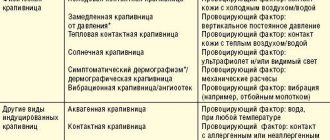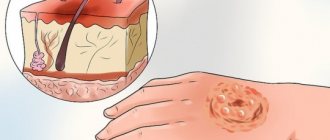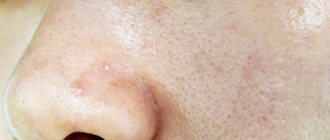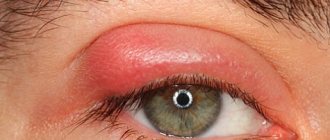Price
Allergology-immunology
| Name of service | Price |
| Consultation with an allergist-immunologist, primary | 3 500 ₽ |
Advantages
- The latest, constantly updated equipment
- Interest-free installments for all services
- Online consultations with an ENT doctor
- Visit of an ENT doctor to your home
- Friendly and qualified staff
- 24/7 ENT assistance
Furunculosis is a purulent-necrotic inflammation of the hair follicle and surrounding subcutaneous fat. Formed on the hairy parts of the skin. The causative agent of the infection is usually Staphylococcus aureus.
Furunculosis is more common in people with weakened immune systems, adolescents and adults. Furunculosis is rare in children and the elderly. The disease affects men more than women. Unsanitary living conditions increase the risk of infection.
Boils may disappear without any treatment. Sometimes they burst on their own and heal without a trace within 2 days to 3 weeks. However, after healing, they can lead to a complication of furunculosis such as scars. If the abscess is accompanied by fever, pain and other symptoms that affect well-being, the person should seek medical help.
Three or more episodes within 12 months are defined as recurrent furunculosis. In this case, you should also consult a doctor, even if the boils tend to heal on their own.
The most effective folk remedies for treating abscesses
The most effective folk remedies for treating abscesses are baked onions and laundry soap. Below are many ways to help cure an abscess using improvised means. Recipes taken from the newspaper “Vestnik ZOZH” How to treat abscesses with baked onions...
Folk remedies successfully help in the treatment of many diseases.
The most effective folk remedies for treating abscesses are baked onions and laundry soap. Below are many ways to help cure an abscess using improvised means.
Recipes are taken from the newspaper “Vestnik ZOZH”.
How to treat abscesses with baked onions Baked onions are the most effective folk remedy for treating abscesses. Warm baked onions should be tied to the wound overnight in a thicker layer so that the heat lasts longer. In the morning there will be no more pus in the wound, and the wound itself will quickly heal. (HLS 2010, No. 8, p. 33)
The woman had an abscess under her arm that could not break through for a long time. The pain was severe, it was impossible to move my arm. A folk recipe helped - the patient baked an onion, cut it in half and applied the cut side to the abscess. The abscess has matured, the wound has healed, and the pus has flowed out. (HLS 2008, No. 8, p. 31).
If you don’t have the opportunity to bake an onion, boiled onions will help cure the abscess. Boil water, throw in an onion cut in half. Cook for 3 minutes. Separate the onion halves into flakes. Take the largest one, remove the film from the inside and apply the onion to the sore spot. Secure with a bandage. In the morning, cover the abscess with streptocide (crush the tablet) and make a bandage. If the wound is not neglected, the abscess will clear in 1 day. (2005, no. 1, p. 31).
After mastitis, a woman developed abscesses on her chest every year. Every time it’s the same thing: a scalpel, cleaning, a tube to remove dirt. Once again, a friend advised her to fasten a baked onion to her chest overnight. In the morning she woke up all wet and sticky - it turns out that the abscess had opened and all the pus had flowed out. My chest didn't ache anymore. (HLS 2004, No. 22, p. 17).
Ointment for abscesses based on propolis tincture Take 1 tbsp. l. pharmaceutical tincture of propolis, butter and honey. Mix and place in a water bath. When the mixture becomes homogeneous, the ointment is ready. After cooling, store in the refrigerator. Apply this ointment to the aching area of the body and bandage it. (HLS 2013, No. 1, p. 27)
How you managed to cure abscesses in a dog or cat with the help of aloe Once a small lap dog was bitten by a large dog. For two days, the bitten dog sat under the sofa, and they could not get it out of there. When she crawled out to the people, the dog had abscesses the size of chicken yolks on her side. The owner squeezed out the pus, the dog moaned, but did not escape. Then she tore off the largest leaf from the aloe and squeezed the juice directly into the wounds. The dog squealed and crawled under the chair. She didn’t show up for a day, and when she came out, the dog’s abscesses had gone, the wounds had healed, and only small scratches remained. (HLS 2010, No. 12, p. 26)
Treatment of abscesses with ficus Indoor ficus helps to cure abscesses and boils. You need to take 2 sheets, grind one in a meat grinder, and put the other in boiling water. Place the rolled mixture on a hot sheet and apply to the abscess, secure with a bandage and leave overnight. If it doesn’t help the first time, repeat the procedure. (HLS 2010, No. 12, p. 31)
Treatment with potatoes. A man developed a lump under his knee that was making it difficult to walk; the patient picked it off. By morning an abscess appeared. By evening, my entire leg was swollen and my temperature rose. In the morning, the doctor at the hospital was horrified by what he saw, scared by amputation, and gave several injections. At home, a neighbor grated potatoes, covered her leg with this paste, and bandaged it. Soon the pain subsided and the temperature subsided. By morning the abscess broke through and the wound began to heal (HLS 2003, No. 22, p. 20)
Valerian for abscesses During a cold, a woman constantly developed pustules in her nose. She took a stick with cotton wool, dipped it in valerian tincture and smeared it on them. I did this 4 times a day, and everything went away. (HLS 2008, No. 13, p. 4)
Garlic tincture will help get rid of boils and colds. Take a small bottle and fill it 1/3 with finely chopped garlic. Fill the bottle to the top with vodka. After a couple of days, the tincture is ready. She should always be at home. At the first sign of a cold, you should inhale alternately from one nostril to the other. When abscesses or pimples appear, lubricate them with this tincture several times a day, and they dry out quickly - this has been tested several times. The same tincture helps with insect bites. (HLS 2012, No. 22, p. 39)
Ointment for abscesses with wormwood Add 1 tbsp to 200 g of thick cream (preferably homemade). l. chopped wormwood herb, boil for 2-3 minutes, cool until warm, strain. Place the resulting ointment in the refrigerator. Apply this ointment to abscesses as needed. Keep the medicine for no more than five minutes, then wipe off with cotton wool or rinse with water. At first the abscess will tug and hurt. Then the wound will heal quickly. (HLS 2012, No. 12, p. 32)
How to treat boils with soap. A woman developed an abscess on her finger. The folk remedies she knew did not help. When the pain could no longer be tolerated, the finger swelled and turned purple, and I went to the hospital. The surgeon said that it was necessary to cut, otherwise gangrene would begin. The woman did not agree to the operation. At home, a neighbor suggested a simple folk remedy for abscesses - you need to moisten a piece of bandage, soap it with baby soap, apply it to your finger overnight and secure it. The woman did just that. In the morning, pus began to come out, and the pain subsided after 2 hours. After several procedures, the finger became normal. (HLS 2008, No. 22, pp. 31-32).
Ointment for boils made from soap and milk
Boil 100 g of milk, add 1 tbsp. l. grated laundry soap. The soap must be newly made. Cook, stirring, until it thickens, like jelly, so as not to spread; after cooling, the ointment will thicken a little more. This ointment treats boils, boils, and abscesses. One woman’s son had 140 boils on his body; she already thought that her son would die, but this ointment managed to cure him (2002, No. 16, p. 4).
The grated soap can simply be diluted with boiling water to the desired consistency, applied to the abscess overnight, with a bandage and polyethylene on top. In the morning all the pus comes out (2007, No. 6, p. 30).
How to prepare ointment for abscesses at home Mix 50 g of grated laundry soap and 150 g of boiling water, add 20-30 g of beeswax, 1 tbsp. l. vegetable oil, 1 tbsp. l. honey and 50 g rye flour. Stir. If the wax has not dissolved, warm it up a little. The ointment is ready. Helps treat abscesses, various pustules, mastitis (HLS 2008, No. 7, p. 30)
Treatment of abscesses with sweet clover
The herb and flowers of sweet clover are widely used in folk remedies for treating abscesses, boils, and various ulcers. This herb accelerates the maturation of abscesses and the discharge of pus. Sweet clover is used in various forms: as a decoction for baths and compresses, an ointment for abscesses is made from it (the flowers of the sweet clover are boiled for 30 minutes in pork fat), warm poultices are made (the herb is placed in a small bag and boiled in a small amount of boiling water for 30 seconds) . In the field, the leaves and flowers of sweet clover are simply kneaded and applied to the wound to soften and absorb swelling and to draw out pus.
Ointment for abscesses from sweet clover.
2 tbsp. l. Grind sweet clover flowers well with 3 tbsp. l. melted butter. Use the resulting ointment to accelerate the maturation of abscesses (HLS 2011, No. 18, p. 36)
Cedar resin will help cure an abscess. Siberian foresters lubricate cuts and wounds with cedar resin; bandages with cedar resin are applied to abscesses, which, accelerating ripening, helps soften and draw out pus. For abscesses and furunculosis, an ointment is made by melting cedar resin, butter and wax. (HLS 2011, No. 2 p. 28, )
Bark decoction cake Boil barberry bark for 10 minutes. Mix a small amount of broth with barley flour to make a dough. Make a cake and attach it to the abscess. It will ripen quickly and the pus will come out. (HLS 2011, No. 7 p. 29)
Treatment of abscesses with nettle Nettle tincture should always be on hand. It is suitable for treating any wounds, bruises, abscesses, and also treats joints and osteochondrosis. It’s very simple to prepare: in May, pick young nettle shoots, fill a container with them loosely, fill with vodka and place in the sun for 2 weeks. Apply gauze moistened with this tincture to the sore spot. If your finger breaks near the nail, tie a bandage soaked in tincture overnight and wrap it in plastic on top. By morning the abscess will burst. If your joints hurt, rub them with this tincture. (HLS 2011, No. 10 p. 33). In addition to nettle tincture, vinegar infused with nettle has great healing power: pour 1 glass of dry leaves into 0.5 liters of apple cider vinegar, leave for 3 days. To cure an abscess, apply a bandage to it with medicinal vinegar (HLS 2007, No. 13 p. 32).
Ointment for boils from resin and onions Heat 500 ml of vegetable oil and add 100 g of pine resin and 100 g of wax. Cook for 30 minutes. Cut off the bottoms of 10 onions along with the peel. Throw one bottom at a time into the mixture of oil, wax and resin, carefully, the mixture may run away. Cook for another 20 minutes. Cool slightly and pour into jars through 4 layers of gauze. This ointment is good for treating abscesses and boils, as well as burns, frostbite, bedsores, and scratches. (HLS 2004, No. 15, p. 24)
Treatment of abscesses with birch leaves Tear birch leaves, rinse and dry. Apply a layer of leaves to the abscess and secure. It is better to do this at night; by morning the abscess will have broken through. (HLS 2009, No. 9, p. 13)
Folk remedy made from honey and flour Mix 1 tbsp. l. butter, vodka, honey and flour. Place the resulting ointment on gauze and attach to the sore spot for 5-6 hours. Usually everything goes away the first time, but if the abscess is large, then repeat the procedure. (HLS 2007, No. 14, p. 30).
An equally effective remedy for abscesses is a honey-soap cake.
Melt 100 g of honey and 100 g of grated laundry soap in a water bath and combine with 100 g of flour to make a flat cake. Apply this cake to abscesses and boils (HLS 2007, No. 14, p. 32).
An even simpler folk remedy for treating abscesses is a cake made from liquid honey (if it has hardened, melt it in a water bath) and flour (it is better to take rye flour or 2nd grade flour). Place 1 tsp on flour. honey and knead the dough so that it is elastic, but not hard, crumbling and not liquid and sticking. Make a cake from the dough and apply it to a sore spot: an abscess, boil, purulent wound, bruise. This is a very effective remedy. (HLS 2001, No. 13, p. 18, ).
Treatment of abscesses with beet leaves A woman’s little son pricked his heel and an abscess formed. A friend advised me to apply a beet leaf to the wound. The child immediately stopped screaming and fell asleep. The leaves were changed frequently, they drew out the pus and the wound quickly healed. Since then, the woman always treats abscesses with this remedy and dries beet leaves for future use between the pages of books, and soaks them in winter before using them. Once her mother got an infection during an injection, the injection site began to itch, then they remembered the beet leaves - everything went away quickly. One day a neighbor came to them to ask for an aloe leaf, because... his daughter developed a splinter under her fingernail. The woman gave him aloe, but in addition she also gave him a beet leaf. The next day, the neighbor came again for a beet leaf, because aloe did not help, the beets helped cure the child’s abscess. (HLS 2006, No. 13, pp. 31-32)
Garlic compresses When an abscess just begins, you need to cut off a piece of garlic and attach it to the sore spot. If the bunk is already old, then you need to grate the garlic, put it in some small container - for example, a bottle cap, turn the contents over to the abscess and secure it with a band-aid. (HLS 2004, No. 18, p. 24)
Abscesses on the leg - treatment with celandine A woman suffering from polyarthritis developed abscesses on the soles of her feet. For many years she could not get rid of them, until her husband decided to use celandine. I passed the plants through a meat grinder, squeezed out the juice, and mixed it with alcohol 1:1. The woman steamed her feet every evening and wiped the soles of her feet with the resulting product. All the abscesses went away and did not appear again. (HLS 2005, No. 7, p. 23)
Treatment of abscesses with burdock root. Dig up the burdock root, wash it and put it in the refrigerator. In the morning on an empty stomach, cut off a piece and chew it well so that the whole mass is moistened with hungry saliva. Apply this mixture to the sore spots for a day. The next morning, repeat the procedure. For quick treatment, it is advisable to use the infusion internally – 1 tbsp. l. Grind the root, brew with 1 cup of boiling water, leave overnight. Drink on an empty stomach in the morning, after chewing the fresh root. Drink the entire portion at once - 1 glass. (HLS 2003, No. 12, p. 16)
Burdock and sour cream. The woman's finger became inflamed and an abscess appeared. The pain was terrible, the surgeon said “cut.” And the old healer looked at the finger and advised that at sunrise and sunset, apply a burdock leaf with sour cream to the abscess with the lower part, roll off a hare skin and tie it with a rag. After 4 days, the abscess broke through, the rod came out, and the wound began to heal. (HLS 2003, No. 21, p. 3)
Symptoms of furunculosis
Boils are red, swollen, and painful nodules of varying sizes. The larger they become, the more painful the sensation. The surrounding skin is usually red and inflamed. The nodules quickly fill with pus and may burst at the last stage of furunculosis. If several adjacent follicles are infected, they may grow together and form a larger nodule called a carbuncle. A carbuncle is a collection of boils.
Fever and swollen lymph nodes with furunculosis are rare, but possible.
Boils and carbuncles usually affect the thighs, armpits, buttocks, face and neck. They occur in areas prone to hair formation, sweat and friction.
How to carry out the procedure
The best home remedies are:
You can pull pus out of a boil using folk remedies
- Flatbread made from flour with honey - take a tablespoon of each ingredient, mix thoroughly, form a flatbread (apply before opening the abscess). We apply it at least 2 times a day; when removing it, a newly prepared composition is needed. In order to break through the head of the rod faster, the cake should always be fresh.
- Aloe leaves for pus - the leaves are thoroughly crushed, the resulting pulp is applied to a gauze swab, fixed with a band-aid (replaced after 7 hours). The pulling composition for boils helps to break through the head of the pustule and clears the way for pus. Purulent boils not only break through, but also come out faster.
- An ointment based on beeswax and butter - the wax is finely shaved, the butter is melted, the resulting mixture is heated until a homogeneous mass is created and used as a compress (kept for two days). After the wound has been cleaned and the rest of the root has come out, further application of funds is not recommended.
- Fresh plantain leaves - washed leaves are applied to the abscess, fixed with a bandage (leaves need to be replaced every five hours). When applying leaves to the skin, ensure the integrity of the skin. If internal boils are opened, further continuation of the procedures is prohibited.
- Onions - to make the purulent boil break out faster, apply the vegetable pulp to the skin. Apply a fresh mass every three hours - the drug will draw out the internal purulent contents.
- Garlic-soap mixture - in the fight against boils, helps draw out the purulent mass of the internal boil, helps the wound cleanse. Baked garlic is mixed with soap shavings, crushed, and a small amount is applied to the surface of the dermis. The top is secured with a bandage and changed every three hours.
How to draw out pus from a boil with potatoes
Potatoes are an indispensable vegetable in the recipe of folk remedies. To prepare a potato compress, you need a medium tuber, grated on a fine grater. The prepared pulp is applied to the site of inflammation and fixed with a bandage. Potatoes should be changed every three hours.
Home remedies for treating the disease are used with caution - allergic reactions may occur that can lead to anaphylactic shock and Quincke's edema. Before using prescriptions, you should consult an allergist.
Causes of furunculosis
The staphylococcus bacteria that cause the infection live on the skin, concentrating in parts of the body where folds are present (furunculosis on the face, in particular furunculosis of the nose and furunculosis of the lips, are the most common places where the disease manifests itself). Usually the immune system keeps them under control, but when the immune system is weakened, they enter the skin through a hair follicle or a cut or scrape in the skin. Furunculosis can be triggered by simple trauma to the skin or scratching it. Boils are often the result of failure to comply with basic personal hygiene standards. When the skin becomes infected, the immune system responds by sending white blood cells to the affected area to destroy the bacteria. Pus is a collection of dead bacteria, dead white blood cells, and dead skin.
The following conditions increase the risk of developing cutaneous furunculosis:
- Diabetes: High levels of sugar or glucose in the blood can reduce the immune system's ability to respond to infection.
- Medications: Some medications weaken the immune system.
- HIV and other diseases that attack the immune system.
- Skin diseases: psoriasis, eczema and acne.
- Excess body weight also increases the risk.
Furunculosis itself is not contagious through contact, but if the immune system is weakened, the infection can sometimes spread when people share the same space or materials, such as clothing and foot spas.
How to draw out pus
To solve the problem (in the fight against boils), there are many specialized medications that promote the rapid separation of purulent contents. What creams are recommended in the fight against boils? The main list of ointments includes:
There are many specialized medications in the fight against boils.
- "Levomekol" - has antibacterial and immunostimulating properties. Accelerates the restoration of skin cells. Helps remove purulent exudate and removes dead epidermal cells.
- “Vishnevsky’s Liniment” - accelerates the ripening of the boil, and after opening the abscess has a healing effect. Recommended for use in the form of applications, compresses, lotions. To draw out the pus, apply it to the skin above the boil under a bandage (changing every 12 hours) and wait until the suppuration breaks through. After the purulent mixture (mixed with blood) begins to come out, the skin should be cleansed, and a bandage with the same agent should be additionally placed on top.
- "Syntomycin" ointment - refers to a number of antibiotic preparations, used only with the prescription of the attending physician. A good way is to apply this ointment to a boil on the first day from the onset of the disease. The remedy is used for multiple boils (furunculosis) to quickly get rid of suppuration.
- Ichthyol ointment has disinfecting, anesthetic, healing and soothing properties. For treatment, take a cotton swab, soak it in the drug and apply it to the suppuration. The top is fixed with adhesive tape and changed every 8 hours.
- “Streptocidal” ointment has a primary antimicrobial effect, but is used less frequently due to a number of contraindications. Can be applied to remove purulent abscesses after consulting a doctor.
It is not necessary to apply ointments directly to the boil to draw out the pus. The products are applied to a cotton-gauze swab and fixed with a band-aid. Removing boils takes from 10 to 14 days. The medications draw out the contents, while simultaneously soothing the irritated surfaces (slight anesthetic effect).
Furunculosis: professional treatment
The doctor prescribes tests for furunculosis - smears of cultures from the affected area (from boils obtained by cutting), as well as from carrier areas on the skin.
Sometimes a complete blood test is performed to determine the cause of the skin infection and determine more effective treatment for furunculosis, as well as to rule out other internal disease. Immunological evaluation may be considered if disease recurs or there is evidence of another disease.
A doctor may use a sterilized needle to puncture a furunculosis abscess and drain the pus. Lancing may be enough to clear up the furunculosis, but if the infection spreads to a deeper layer under the skin, your doctor may prescribe antibiotics.
At the Ear, Nose and Throat Clinic, we treat various skin diseases, including furunculosis, at reasonable prices - identifying the root cause and prescribing effective medication and physiotherapy.
Prices for services
| Surgical treatment of felon | 4,025 rub. |
Panaritium is an acute purulent inflammatory process that is localized in the soft tissues of the fingers (less commonly, toes) and occurs on the palmar surface of the fingers. Purulent inflammation on the dorsum of the fingers is not classified as panaritium, with the exception of processes in the nail area.
Panaritium develops as a result of the activity of pyogenic microorganisms (most often Staphylococcus aureus ), which penetrate the tissue through minor skin lesions (abrasions and small wounds on the hands), which can sometimes go unnoticed. In this case, characteristic swelling, redness and pain are observed in the area of the affected finger. In the initial stages, conservative treatment is still possible. In severe forms of the disease, chills and fever are observed. The pain can be sharp, throbbing and interfere with normal sleep. An abscess begins to form on the affected area of the hand.
The thing is that on the palmar surface of the fingers there are many important anatomical formations: tendons and tendon sheaths, nerves, blood vessels, joint capsules, etc. The subcutaneous tissue in this area has a special structure. Numerous elastic and strong fibers run from the skin to the palmar aponeurosis. In addition, longitudinal bundles of connective tissue are located in the thickness of the fiber. As a result, the fiber is divided into small cells, reminiscent of a honeycomb.
This structure, on the one hand, prevents the spread of inflammation “along”, on the other hand, it creates favorable conditions for the penetration of the purulent process deep into the tissues. That is why with panaritium, rapid progression is possible, involving tendons, bones and joints, or even all tissues of the finger.
When an abscess forms, surgery is necessary, because the structural features and location of soft tissues in this area, as noted above, contribute to the spread of suppuration in depth. Without proper treatment, serious complications are likely, so if you suspect panaritium, you should immediately consult a doctor.
Panaritium is more often observed in children, as well as in young and middle-aged people - from 20 to 50 years. According to statistics, three quarters of patients fall ill after microtrauma received at work. The most common localization is the 1st, 2nd and 3rd fingers of the right hand. The development of felon is promoted by both external (cooling, vibration, exposure to chemicals) and internal (weakened immunity) factors.
Prevention of furunculosis
Ways to prevent the disease include:
- keeping skin clean by washing regularly;
- immediate disinfection of all skin wounds, cuts and abrasions, even the smallest ones;
- Cover any cuts with a sterile dressing to prevent infection.
Eating a healthy, balanced diet and regular exercise will improve your overall health and immune system, reducing the risk of developing not only furunculosis, but all diseases in general.
Seeing a doctor in a timely manner will help maintain your health.
Don't delay treatment, call right now. We work around the clock. tel. (24 hours a day)
Diagnosis of felon
The diagnosis is made based on the patient’s complaints and clinical symptoms of the disease. To determine the shape of the panaritium and clarify the localization of the abscess, palpation is performed with a button probe.
To exclude bone and articular panaritium, radiography is performed. It should be taken into account that, unlike bone panaritium, in the articular form of the disease, changes are not immediately detected and may be mildly expressed. Therefore, to clarify the diagnosis, comparative radiographs of the healthy finger of the same name on the other hand should be prescribed.
Types and symptoms of paraproctitis
Purulent paraproctitis carries a lot of unpleasant symptoms
Symptoms of the inflammatory process vary depending on the type of disease and the location of the purulent focus. Doctors distinguish 6 types of paraproctitis with individual characteristics:
- Subcutaneous paraproctitis is a purulent focus located directly under the skin and is most common. The symptoms are pronounced. This is a throbbing pain, hyperemia of the skin. The patient cannot sit, lie, or move normally. Defecation is extremely painful and difficult. The temperature can rise to 37.5 degrees.
- Submucosal paraproctitis - the focus is located under the mucous membranes of the intestines. The symptoms resemble the subcutaneous process, but the pain syndrome is less pronounced.
- Ischiorectal abscess - involves the area above the muscle that elevates the anus. The symptoms are vague, as the focus is located deep under the skin. The pain is dull and intensifies when visiting the toilet. External signs begin to appear only on the 5th or 6th day from the onset of the inflammatory process. Body temperature rises to 38 degrees. General weakness, intoxication.
- Pelviorectal paraproctitis is located deep and separated from the peritoneal organs by a thin wall. The patient has a fever, the temperature rises, and he is tormented by chills. This is accompanied by pain in the lower abdomen. The pathology is difficult to diagnose, since the symptoms are similar to those of many diseases and emergency conditions. On the 10th day, urinary retention and difficulty defecating occur.
- Necrotizing paraproctitis - symptoms are similar to the subcutaneous process, but the infection spreads quickly. This leads to tissue death. In the future, the patient requires muscle and skin plastic surgery.
- Chronic paraproctitis is a long-term process, which is accompanied by the formation of fistula tracts. At the same time, pus mixed with blood and feces oozes from these passages. Lack of treatment leads to the formation of a system of fistula tracts.
How to cure purulent sores in the mouth
Ulcers in the oral cavity can appear due to non-compliance with hygiene rules, against the background of infectious or fungal pathology, long-term use of medications, diabetes, and frequent stress. The best medications for treatment are Benzocaine ointment, Solcoseryl. If the wounds occur due to an exacerbation of herpes, Acyclovir, Famciclovir will help.
Effective home therapies:
- Rinse - dissolve 5 Furacilin tablets in 400 ml of water, add 5 g of salt and soda. The procedure should be carried out 3-4 times a day.
- Cauterization. Rinse your mouth with a soda solution, apply hydrogen peroxide or Chlorhexidine to a sterile piece of cotton wool, and apply to the wound for 5 minutes. Carry out the procedure throughout the day at intervals of 5–6 hours.
- Anesthesia and disinfection. Combine the juice of half a lemon with 3 g of soda, add 5 ml of cold water and liquid honey. Apply the composition to purulent wounds in the morning before breakfast and before bed.
If wounds in the mouth are accompanied by severe pain, a piece of ice can be used as first aid and pressed against the sore - this procedure will help prevent the development of inflammatory processes and quickly eliminate discomfort in the oral cavity.
Therapeutic tactics for purulent paraproctitis
Purulent paraproctitis: surgery as a treatment method
A patient with a rectal abscess has little choice. The abscess must be opened and drained. This can only be done surgically. The operation is urgent. That is, it is carried out immediately after diagnosis.
The surgeon performs manipulations under general or spinal anesthesia. The wound surface remains open until complete sanitation. After eliminating the source of inflammation, sutures are applied and the wound is closed. In case of a chronic process, the operation is performed exclusively by a proctologist surgeon.
The main thing in this case is to detect and excise all fistula tracts, drain the wounds, and exclude communication with the rectum. After the intervention, a course of antibiotics is prescribed to suppress the infection. Wounds are treated with antiseptics and dressings are performed.
If you go to the hospital in a timely manner, the prognosis for recovery is favorable.











